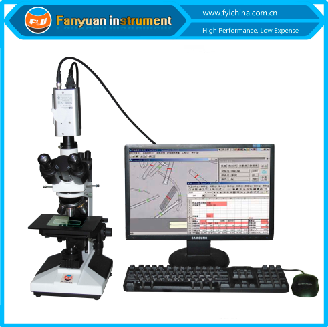Maximize Your Fibre Optic Efficiency: Comprehending Optical Fibre Diameter Analyser Technology
The efficiency of fiber optic systems is critically influenced by the accuracy of their size, an aspect frequently neglected in the quest of ideal signal honesty. Recognizing the modern technology behind optical fibre diameter analysers discloses the detailed equilibrium between measurement accuracy and manufacturing quality.
Value of Optical Fibre Diameter
The size of optical fibre plays a crucial duty in determining the performance and efficiency of interaction systems. On the other hand, smaller sizes often tend to sustain less settings, which can improve signal clearness and decrease crosstalk.

Furthermore, recognizing the size's implications can cause set you back financial savings by lowering the demand for signal boosting and repeaters in comprehensive networks (optical fibre diameter analyser). In conclusion, the significance of optical fibre diameter can not be overstated, as it directly affects the general effectiveness and dependability of modern interaction systems

How Size Influences Signal Quality
Signal quality in optical fiber systems hinges dramatically on the diameter of the fiber. The diameter influences numerous key parameters, including depletion, data transfer, and modal dispersion. A smaller sized size can result in higher attenuation prices, resulting in signal loss as light travels via the fiber. This attenuation can endanger the integrity of the transmitted information, resulting in a decrease in signal quality, specifically over fars away.
Alternatively, larger sizes generally allow for boosted light capture and decreased modal dispersion, enhancing signal quality. In multimode fibers, a larger core diameter can support several light modes, but it may likewise introduce intermodal diffusion, which can degrade signal high quality. As a result, choosing the ideal fibre size is essential for achieving the wanted performance in details applications.
In addition, the communication between the fiber size and the wavelength of the light utilized plays a vital role in figuring out the reliable transmission distance and overall signal integrity. Recognizing how fibre size influences signal top quality is crucial for network designers and designers making every effort to maximize optical fiber systems for dependable, high-speed data transmission.
Summary of Size Analyser Innovation
In many optical fiber manufacturing procedures, accurate measurement of fibre size is necessary for making certain regular performance and quality (optical fibre diameter analyser). Size analysers are innovative tools created to examine the physical dimensions of optical fibres with high accuracy. They use innovative optical and laser technologies to gauge the size, ovality, and concentricity of the fibre, thus supplying critical information for quality assurance
These analysers can run in-line during the manufacturing procedure or as component of off-line testing procedures. In-line systems enable real-time tracking, permitting producers to adjust specifications right away, thus preserving optimal manufacturing conditions. Off-line analysers, on the other hand, supply extensive analyses of batches, making sure that any kind of discrepancies from defined tolerances are determined and resolved.
Diameter analysers considerably contribute to the reduction of issues find this in optical fibres, improving total product dependability. By constantly measuring essential specifications, these modern technologies assist in compliance with sector criteria and specifications. As the need for high-performance optical fibres remains to rise, the function of size analysers comes to be progressively important in accomplishing the wanted quality and efficiency criteria in fiber optic systems.
Trick Features of Fibre Diameter Analysers
Although numerous designs of fiber diameter analysers exist, they frequently share numerous crucial features that enhance their performance and dependability. One of the most considerable features is high-resolution measurement capacities, which guarantee precise size analyses, vital for keeping quality assurance in fibre manufacturing. Furthermore, many analysers integrate sophisticated optical sensing units developed to detect minute variations in fibre diameter, hence giving invaluable information for process optimization.
One more crucial function is real-time monitoring, enabling drivers to receive prompt feedback on fiber size throughout the manufacturing procedure (optical fibre diameter analyser). This capacity promotes quick adjustments and reduces the chance of issues. Many analysers likewise come equipped with straightforward user interfaces, enabling drivers to quickly navigate with setups and information outcomes
Additionally, durable information storage and analysis performances are necessary for tracking historic efficiency fads and ensuring compliance with sector requirements. Some versions even use connectivity alternatives for integration right into existing manufacturing control systems, improving total functional performance. Lastly, compact and mobile designs allow for find more information versatile release within production settings, making sure that quality control procedures are seamless and effective. These functions jointly contribute to the efficiency of fiber size analysers in optimizing fiber optic efficiency.
Finest Practices for Fiber Optimization
First, normal calibration of optical fiber size analysers is necessary. This makes certain exact measurements and lessens possible disparities that might influence efficiency. Next off, keeping a tidy workplace is important; dust and pollutants can lead to signify deterioration.
Additionally, it is essential to select fibres that meet certain application needs. This entails examining variables such as depletion, bandwidth, and ecological problems. Proper installation methods should also be stuck to, consisting of avoiding sharp bends and excessive stress, which can jeopardize fiber integrity.
Furthermore, using advanced tracking systems can promote real-time efficiency evaluations, allowing punctual recognition of issues. Routine testing and maintenance need to be performed to make sure that fibers continue to be within optimal functional specifications.
Lastly, training workers on the most up to date fiber optimization modern technologies and techniques will improve their capacity to implement reliable techniques. By adhering to these ideal practices, companies can considerably boost the performance and life expectancy of their optical fibre systems, ensuring effective interaction and data transfer.
Final Thought
In conclusion, the integration of optical fibre size analyser modern technology is important for taking full advantage of fibre optic performance. By making certain exact dimensions of fibre measurements, these analysers significantly improve signal high quality and lower losses during information transmission.
Signal high quality in optical fiber systems hinges considerably on the diameter of the fibre.In lots of optical fiber manufacturing processes, precise measurement of fiber diameter is try here necessary for making sure consistent performance and quality. As the need for high-performance optical fibers proceeds to increase, the role of size analysers becomes significantly vital in achieving the desired high quality and efficiency standards in fibre optic systems.
These features collectively contribute to the efficacy of fibre diameter analysers in maximizing fibre optic efficiency.
In verdict, the integration of optical fibre diameter analyser technology is crucial for optimizing fiber optic efficiency.